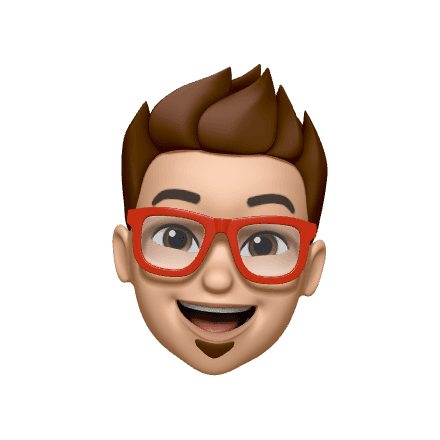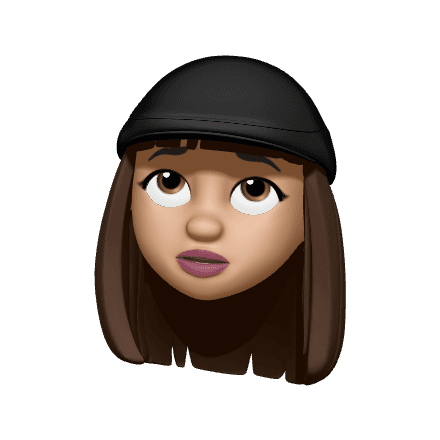OVERVIEW
As an experienced end to end IC designer, I led a team of two designers to create a 0-1 client work specific calendar view, reaching 20K monthly active users with a 66% retention rate.
My Role
I was responsible for leading the feature from insight gathering through to defining the customer problem, mentoring designers, high fidelity design, delivery, measurement and optimisation all while keeping stakeholders informed and aligned along the way.
Company
Teamwork.com
Year
2022 - 2024
Skills
Lead designer
Research
UX
UI
20K MAU
Saas
B2B
Mentorship
The problem
Customers struggled to manage projects, track time, and coordinate schedules across disconnected tools, leading to inefficiencies and a fragmented view of progress.
🖼️ No big picture of meeting, tasks and time logs: Customers lacked a single place to view their meetings, tasks, and time logs in Teamwork.com.
🗓️ Disconnected process and third party tools: Customers juggled platforms like Google Calendar, HR systems, and spreadsheets for time tracking, creating silos.
🎨 NPS of key persona ‘Worker bees’: Our target persona scored 4.2 on the NPS scale, highlighting significant dissatisfaction and unmet needs within this group
⏰ Tracking time logs on a calendar: Inefficient time tracking: Manual logging was clunky, leading to missed hours and frustrated managers.
⌛ Wasted time reminding employees to log time: Managers spent valuable time reminding employees to log their hours in Teamwork. Our data revealed these workers often logged their time on the last day of the month, spending 1-2 hours entering their time logs.
The RESULTS
⬇️ Saved 2 hours/month: Introduced a time block and ‘Quick Log’ feature to reduce manual effort for time tracking so customers no longer had to manually enter and remember how their time was spent at the end of the month.
📈 20K monthly active users with a 66% retention rate: The calendar view now attracts 20,000 monthly active users and boasts a high retention rate. For the business, this has led to reduced churn, increased revenue, and enhanced engagement and adoption among our key personas.
🎨 Increased NPS by +2.6 points: NPS for our target persona increased from 4.2 to 6.8 within six months of launch.
🚀 Market leaders: Became a leading competitor in the project management space with improved adoption and reduced churn.
Discovery and research
ANNUAL CUSTOMER FEATURE SURVEY
Defining research objects:
📄 Understand customers current pain points surrounding planning and scheduling task deadlines.
🧑🤝🧑 Discover the underlying need for a calendar view and who our target personas should be.
🕵🏻 Understand customers current pain points with having oversight of meetings alongside tasks.
🗓️ Discover the underlying needs for a google calendar integration.
KEY PERSONA IDENTIFIED: WORKER BEE WILLIAM
KEY PERSONA IDENTIFIED: PROJECT MANGER PAULA
SYNTHESISING RESEARCH: CATEGORISING INSIGHTS BY PERSONA, INSIGHT TYPE, THEME
SYNTHESISING RESEARCH: PRIORITISED THE TOP JOBS TO BE DONE with product
“Every morning I hop into my calendar, and I assign the tasks a place on my schedule and just call it time blocking. I would say, most of our team does this.”
“Most of my job is meetings. The meetings are logged in Google Calendar by date and time. I also block time in Calendar for the tasks I am working on - so that I will not get scheduled for meetings at that time. Then I use calendar to log my time in teamwork. Integrating Google Calendar and Teamwork would basically eliminate my need to log time.”
“We have some clients that have allotted hours per month that we have to spend working on their account. A task is essential for those accounts, as we will track time that we spend in that meeting back to the task.”
“If you try to plan in the current workload planner, I just don't see anything in the schedule about whether they are actually available or not. In Google Calendar we integrated our pay and holidays system and everything. So basically I know when colleagues are off months ahead of time, because that booking is already in my Google Calendar. But nothing is in Teamwork, and I have to manually add it.”
COMPETITOR ANALYSIS
ALIGNMENT WITH STAKEHOLDERS
Sketching & WIREFRAMES
DEFINING SCROPE, ROADMAP & RELEASE STRATEGY
MY ROLE & MENTORING DESIGNERS
Mentorship and collaborating on shared features: This feature touched three teams ownership areas. As the lead designer of the area, I collaborated and mentored the designers and ensured cohesive flows across the entire app so that it felt like one experience to our customers.
Weekly feedback sessions: As the lead designer across the Core area I was responsible for mentoring and elevating the craft of the more junior designers in the area that also were responsible for implementing calendar features. I facilitated weekly feedback sessions with these designers, these session were crucial in aligning designs and giving feedback on flows.
1:1 deep dive coaching sessions: I held one-on-one mentoring sessions with designers, where I would dive deep into topics they either expressed a desire to improve.
HIGH FIDELITY, FEEDBACK & USABILITY TESTING
SYNTHESISING RESEARCH: CATEGORISING INSIGHTS BY PERSONA, INSIGHT TYPE, THEME, AND OUTLINED THE TOP JOBS TO BE DONE
DESIGNS: TASK DETAILS SIDE PANEL

DESIGNS: 2 way google sync


DESIGNS: Task popover & drag to reschedule
DESIGNS: QUICKLY ADD FOCUS BLOCKS ASSOCIATED WITH A TASK
DESIGNS: VIEW TASKS, TIME LOGS AND MEETINGS ALL IN ONE VIEW


DESIGNS: Timeblock & event popover
DESIGNS: TAILORED UPGRADE PATH EXPERIENCE
COLLABORATION ACROSS THE ORGANISATION

Product Marketing
@Teamwork.com
Siobhan was a lifesaver on the Calendar view launch, whether it was helping educate our customer-facing teams about the earliest iterations of the feature, or coming in at the last minute and giving support to something as seemingly mundane as a blog post.
She has been a huge help every step of the way and I know we literally could not have done it without her!
FEEDBACK FROM COLLEAGUES

Group Product Lead
@Teamwork.com
With the Calendar view out with the first 20% of existing users, we're already seeing some incredible feedback on it "This is amazing!!! We have been waiting years for the ability to block time and track time in one place". Massive well done to Siobhan on her incredible discovery and design work on this one.
This should have a huge impact on our Worker Bees!

Design Systems Lead
@Teamwork.com
Siobhan's work on the calendar feature is truly remarkable, and it'll undoubtedly deliver so much value to our customers in the near future.
Not only did she put in exceptional effort in researching and iterating on the feature, but she put together the most EPIC handover file I've ever seen. Not to mention the impeccable UI
✨All-round-superstar ⭐️

Head of Design
@Teamwork.com

Big shout out to Siobhan for her EXCELLENT product & design work on calendar.
It's looking really polished and elegant, a testament to the rigour and quality of her design process. She really sweated the details and considered so many use cases.
Well done Siobhan!
BETA RELEASE & CUSTOMER FEEDBACK
Monitoring feedback channels: We had a permanent ‘Send feedback’ button on the calendar page for customers to send us direct feedback. This funnelled into our user research platform Dovetail where we could group and tag insights to see reoccurring themes and feature requests
Daily interviews: We had a closed Beta and kept close contact with key persona and high value accounts to ensure the we captured all their feedback and the calendar were meeting their organisation needs.
Backlogs of features : We had a backlog of calendar features that we were ready to pick up, once feedback started coming in I worked in parallel with the devs to bring value to the top features customers were requesting the most.
Upgrade path: Through the Beta release we were really able to gage the high value features the customers were using, this helped inform our gating plan and the calendar was a key feature in our plans that enticed customers to upgrade their account.
DATA ANALYTICS & INSIGHTS
Target Audience: Identifying and deeply understanding the primary users or customers. This stage involves researching demographics, needs, and behaviours to tailor the product to fit the market segment best. Knowing the target audience helps create relevant features and messaging that resonates with potential users.
Activation: This focuses on the initial experience users have with the product. It’s about ensuring that users see value quickly and are motivated to continue using it. Activation often includes onboarding processes, in-app guidance, and other techniques to encourage users to reach an "aha" moment where they grasp the product's core value.
Retention: Retention strategies aim to keep users returning to the product over time, moving from casual users to engaged, loyal customers. Retention efforts often involve continuous value delivery, personalised content, updates, or rewards for regular use, which can prevent churn.
Satisfaction: Satisfaction goes beyond basic retention, focusing on whether users are genuinely happy with their experience. This includes usability, customer support, product reliability, and whether the product fulfils its promises. High satisfaction leads to word-of-mouth promotion and can enhance long-term loyalty.
REFINE, OPTIMISE & REFLECT
We uncovered retention was high but discovery was low, so we created three experiments and worked with product marketing and sales to improve discovery of the new feature. Ultimately bumping discovery in a matter of weeks.
Experiment 1 : Cross promote using existing timer feature




























